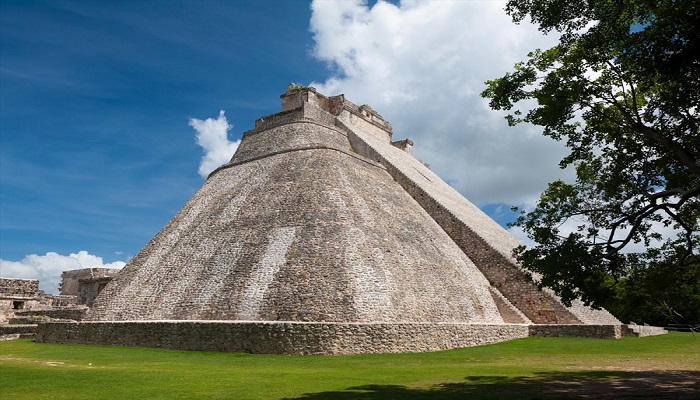With 29 sites, Mexico has more sites on the UNESCO World Heritage list than any other country in the Americas. During the 1990s, the following sites were added:
Historic Centre of Morelia (added to the UNESCO World Heritage List in 1991)
Morelia has an impressive colonial town center with palaces, monasteries (mostly converted into cultural centers), and churches in the Renaissance, Baroque, and Neo Classical styles. Over 200 buildings are in locally sourced pink stone.
El Tajin, Pre-Hispanic City (added to the UNESCO World Heritage List in 1992)
El Tajin in the mountains near the Mexican Gulf coast was at its peak from the 9th to 13th centuries. This archeological site shows important astronomical and symbolic features.
Historic Centre of Zacatecas (added to the UNESCO World Heritage List in 1993)
Zacatecas was founded on silver wealth in 1546 and prospered during the 16th and 17th centuries. It has numerous, especially Baroque buildings including a delicately carved cathedral façade.
Rock Paintings of the Sierra de San Francisco (added to the UNESCO World Heritage List in 1993)
An unknown civilization in the Baja California Peninsula flourished from BC100 to AD1300 leaving a large collection of well-preserved rock paintings.
Whale Sanctuary of El Vizcaino (added to the UNESCO World Heritage List in 1993)
The lagoon area on the Baja California Peninsula is an important ecosystem and breeding area for various species including whales and turtles.
Earliest 16th-Century Monasteries on the Slopes of Popocatepetl (added to the UNESCO World Heritage List in 1994)
Fourteen well-preserved monasteries from the orders that first converted Mexicans to Christianity.
Historic Monuments Zone of Querétaro (added to the UNESCO World Heritage List in 1996)
Unusual town plan of geometric Spanish and twisting pre-Hispanic alleys survived side-by-side in the heart of this colonial town with numerous Baroque palaces, churches, and monasteries.
Pre-Hispanic Town of Uxmal (added to the UNESCO World Heritage List in 1996)
Uxmal was an important Mayan town from around 700 to 1000. This extensive archeological site shows knowledge of astronomy and well-developed craft skills.
Hospicio Cabañas, Guadalajara (added to the UNESCO World Heritage List in 1997)
This rare early-19th-century hospice has unique architectural features taking into consideration the needs of its disadvantaged occupants. The chapel has murals by José Clemente Orozco.
Archeological Zone of Paquimé, Casas Grandes (added to the UNESCO World Heritage List in 1998)
Paquimé played a major role in trade between the Pueblo culture and Central Mexican civilizations in the 14th and 15th centuries. The civilization vanished shortly after the arrival of the Spanish.
Historic Monuments Zone of Tlacotalpan (added to the UNESCO World Heritage List in 1998)
Tlacotalpan is a typical, 16th-century Spanish colonial river port on the Gulf Coast. It preserved its town layout with wide streets, modest houses in a variety of styles and colors, as well as tree-shaded public spaces.
Archaeological Monuments Zone of Xochicalco (added to the UNESCO World Heritage List in 1999)
Xochicalco is a typical fortified commercial and cultural center from the period following the decline of Teotihuacan. It flourished from 650 to 900 and combined art and architectural elements from various regions.
Historic Fortified Town of Campeche (added to the UNESCO List in 1999)
Campeche on the Gulf Coast of the Yucatan is a typical colonial-era Caribbean harbor town. Its Baroque town center is surrounded by a wall and fortifications typical of military architecture of the 17th and 18th centuries.









